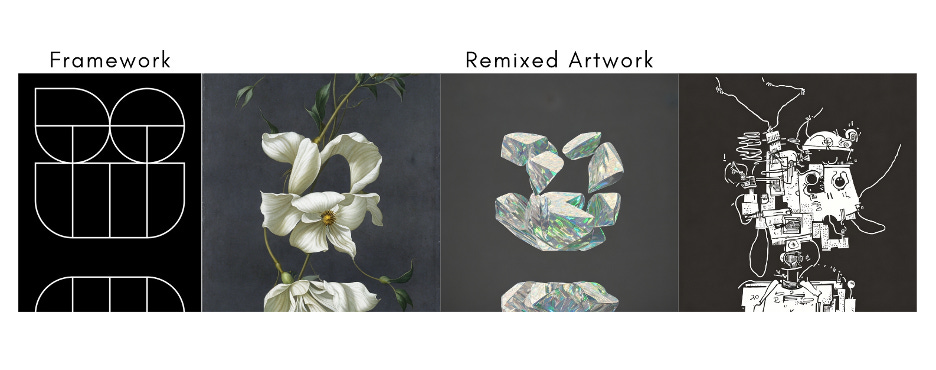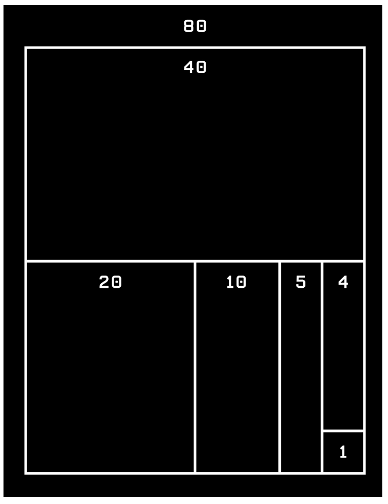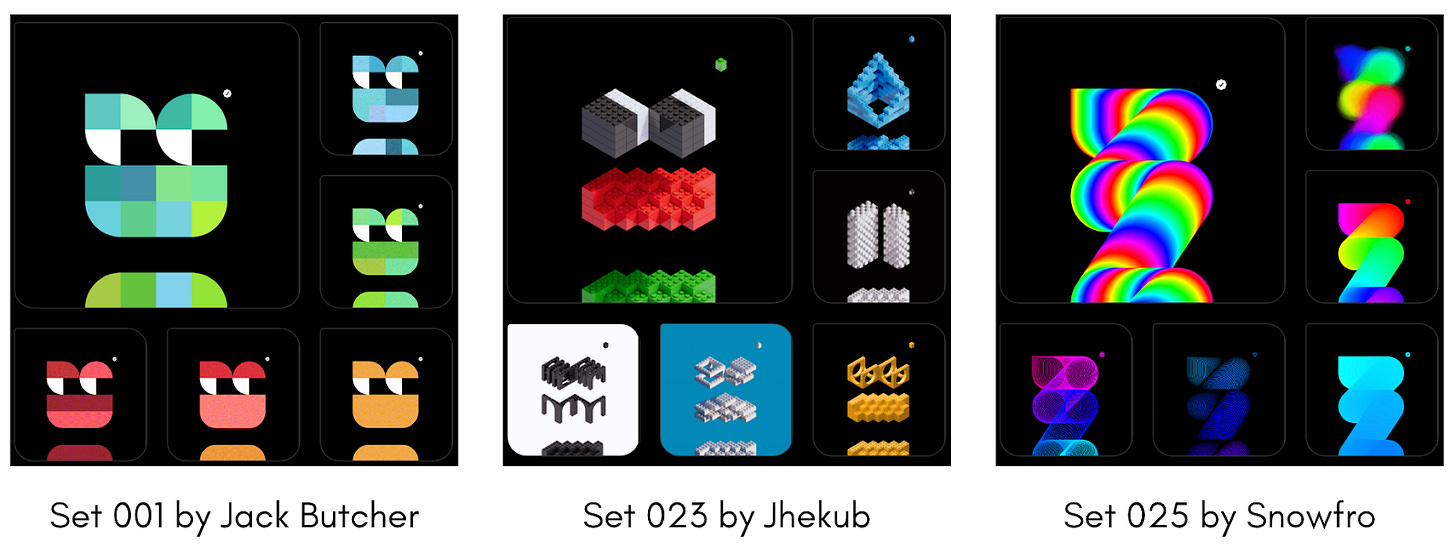#37 - Opepen: An Open Source Art Protocol
Unpacking Attention Based Network Effects in Opepen
Stanford Blockchain Review
Volume 4, Article No. 7
📚Author: LJW – Harvard Crypto Lab
🌟Technical Prerequisite: Low

Introduction
Throughout the crypto bear market of 2023, the Opepen NFT project has continued to build a fledgling community of artists and enthusiasts. Opepen is an NFT project with 16K NFTs broken down into 200 sets, where each set features art from a different artist. The project includes a series of mechanisms that help build community cohesion and allow NFT holders to help decide which artists get selected to do a set. Beyond the NFTs and 200 sets, Opepen has promoted remixing and encouraged artists and community members to participate in Opepen without needing to hold the NFT. In this article, we will discuss what Opepen is and dive deeper into how it mixes art, NFTs and open-source values to scale its project through attention based network effects.
Opepen’s Structure
On January 8, 2023, Jack Butcher launched Opepen as an open edition (OE) NFT and a free mint [1]. Following the success of Butcher’s run with his other NFT project, Checks, many thought Opepen was just a simple free mint. But then on February 19, 2023, Jack tweeted “Opepfp?” and lit the fuse to turn Opepen from an OE into something more [2]. Opepen evolved from a 16K Open Edition NFT to a collection of 200 sets with 80 NFTs, where each Set features Opepen art created by different artists. The goal of Opepen is to create a visual framework that is recognizable and encourage others to remix the base image – both formally and informally.
Sets
The 16K Opepen NFTs are divided into 200 sets, or sub-collections, where each Set has a total of 80 NFTs [3]. Each Set features a different artist that will create art for that particular set. Since Opepen is a framework of recognizable shapes, each Set becomes a canvas for a specific artist to reimagine and manifest their artwork onto the Opepen framework. By structuring the project as 200 Sets, Opepen can collaborate with different artists and feature a variety of artistic styles. Structuring releases through sets expands the surface area for attention but does so in a collaborative way [4].
Rarity
Out of the 16K Opepen NFTs, rarity breaks down as follows [5]:
Forty: Total of 8,000 NFTs
Twenty: Total of 4,000 NFTs
Ten: Total of 2,000 NFTs
Five: Total of 1,000 NFTs
Four: Total of 800 NFTs
One: Total of 200 NFTs
Within each Set of 80 NFTs, there are 6 images, one for each rarity. The “One” NFTs are the most rare and represent the 1 of 1s in a particular Set of 80 NFTs, whereas the “Forty” NFTs are the least rare, with 40 NFTs having the “Forty” image in a Set.
The Opt-In Mechanism
The 16,000 Opepen NFTs start as “unrevealed.” To reveal the Opepen NFTs, the project uses its Opt-In mechanism. The goal of the Opt-In Mechanism is to allow the NFT holders to decide which artists get approved to be included into an Opepen Set. It does so in the following steps:
For each set, Jack pitches a set to the community which includes highlighting the artist and previewing the set’s art on Opepen’s website.
Holders of the unrevealed Opepen NFTs choose whether to opt-in to a set. If they opt-in, by signing a message on the Opepen website, they are signaling that they want to include their unrevealed Opepen NFT into the pool to be selected for a reveal.
For a set to be released, it must pass a threshold of opt-ins. For example, if the Set gets less than x% opt-in across the different rarities, then the set will not launch. (At the time of this writing, a set must have ~2,000% demand to be revealed). If the set does not meet the opt-in threshold, Jack goes back to the drawing board and pitches another set to the community. For example, if Jack pitches a Set with Artist A, and not enough (does not meet the 2,000% threshold) unrevealed Opepen NFTs opt-in to that Set, then the Set does not proceed to launch and a new artist collaboration gets pitched.
For Sets that meet the opt-in threshold, the NFTs that opted in get selected randomly (at each rarity level) to be revealed.

The opt-in mechanism, particularly step 2 above, gives the NFT holders power to decide what they like (or not like) by voting with their NFTs on which Sets they want to see included into the collection. But this isn’t solely a community decision because ultimately Jack is the curator, as outlined in Step 1, of which Sets and artists are presented for opt-in. Furthermore, any artist can submit a set to be considered for opt-in [6] but Jack (still) decides and curates which Set to present to the community for opt-in. This creates a symbiotic relationship: trust the founders to curate but let the holders decide — a “bottom-up x top-down” collaboration.
Creating a Framework That Promotes Remixing
To date, Opepen has released 32 of the 200 Sets and featured various artists and collaborations. For example, Set 001 (the first set) was created by Jack Butcher, himself [7]. Set 023 was created by Opepen community member Jhekub [8]. Set 025 was a collaboration between Jack and SnowFro [9].
But participation in Opepen isn’t purely through the 200 “official” Sets. Opepen's "core art" is a framework made up of recognizable shapes. Jack and Jalil (lead dev of Opepen) have encouraged the community to remix the Opepen image freely regardless of if they hold the NFT or not. This has led to the proliferation of remixed images on top of the Opepen framework where the community has added layers to the original image. The implicit requirement is that one follows the framework so that the remix image is recognizable as an Opepen image. But since Opepen is a series of simple base shapes, what is considered Opepen ends up being fairly broad. For example, all of the below images look different, yet they are all Opepen. Some were created by Jack and some were created by community members.

By encouraging permissionless remixing (the Opepen base image is CC0 [10]), the Opepen framework fosters a sense of community among creators – an Opepen derivative image is instantly recognizable to others who have used the same framework. By defining constraints while allowing for open-ended creation, Opepen strikes a balance between a completed work and an ongoing conversation. This has led to a constantly evolving / community-driven body of work, where no single image is considered to be the canonical Opepen.
The canonical Opepen image is the framework. Everything else is a derivative – whether it is the derivative images included in the official 200 sets through the community opt-in mechanism or images that others create and post on social media.

Remix Culture and Attention-Based Network Effects
The network effects of Opepen are powered by derivatives because derivatives broaden the attention given to the project. By creating an easy to remix framework that allows for infinite derivation, there are many ways others could add to the attention of Opepen. Some examples include:
An artist might collaborate with Opepen through one of the official 200 Sets and highlight Opepen to their community as a result. Opepen Set 011 [11] which was a collaboration with Pudgy Penguins was a good example of this.
A creator might create a remix of an Opepen derivative image for another community member in Opepen [12].
An artist might create a separate NFT collection based on Opepen that is unrelated to the 200 Sets but is based on the Opepen framework. Kozi’s (an Opepen community member) Dohpepen Set [13] is a good example of a collection that is related to Opepen but isn’t in the 200 Sets that Jack is curating.
In the above examples, each new piece of art or derivative doesn't stand alone, they all contribute to and benefit from the collective attention that accrues to Opepen. Each remix and derivative adds another “block” to the “chain of Opepen art.”
The above conditions create a flywheel that encourages others – leading artists, amateurs, creators, etc – to remix the Opepen image, which further adds to the attention of the project, which further encourages others to dive into the project.
Opepen has opted for a model that allows anyone to join the Opepen community, where the (soft) entry requirement is any contribution to Opepen’s attention – creating a derivative image, writing a thread about the project, hosting a space for the community (just to name a few). This has enabled a positive sum game where the community begins to look like a network versus a top-down structure. In this network, one does not have to be an NFT holder or have a large position in the network to be notable. Designing the project to look like a network enables community members to find their sub-community but still be a part of a massive and growing umbrella community. The network structure is positive-sum. If you are an artist, you might be the leader of your sub-community, but that does not preclude you from being a supporter in a different sub-community elsewhere in the Opepen community.
Open-Source Art Protocol
Taking the above, we can view Opepen as an open-source art protocol. Traditionally, a protocol refers to the underlying rules of engagements for computers. Similarly, in Web3, a protocol might describe how different machines reach consensus, which actions users can take given that some conditions are met, so on and so forth.
Viewing Opepen through the lenses of a protocol looks something like this:
The Opepen Framework is open for others to remix and make derivatives. You can use any tool and/or medium.
Whether a remixed image is related to Opepen is defined by following the framework and the attention given to it, (i.e. do others see it as an Opepen derivative?)
Derivatives add value to the protocol – each derivative brings attention to Opepen and broadens its attention-based network effects. Attention sustains Opepen.
Each Opepen image or derivative adds to the collective "state" (history) of the Opepen universe.
The Opepen “protocol” is effectively a set of artistic guidelines and foundational design elements (the recognizable shapes) – it’s a creative template that is open for anyone to use and remix.
Open-Source Values
Opepen was designed to be an open-source community. For this to work at scale, there needs to be an environment that promotes remixing. There are several conditions that enable this in the Opepen community:
Building blocks and simple frameworks: Simple frameworks (i.e. Opepen shapes) help define constraints which reduces the activation energy needed for someone to create on top of the framework. Building blocks enable composability and give others tools to create. In Opepen, the building blocks are often images, but more tactically they are things that make it easier for someone to remix. For example, a community member sharing a public Figma file for others to use. Ironically, giving others the building blocks and defining constraints makes the Opepen image infinitely remixable.
Attracting a community of contributors: Similar to open-source software communities, Opepen is maintained by its community of contributors. Jack and Jalil’s philosophy of promoting remixing has organically attracted like minded individuals to join the community. Those community members then reinforce the culture of remixing. For example, community members like Jhekub led workshops on how to use AI to remix the Opepen image [14]. Beyond actual creation, another community member, BoredElonMusk spun up a weekly community space [15] as a place for the community to get together and talk about all things Opepen.
Make it permissionless: Aside from the Opepen image being CC0, the culture in the Opepen community centers around permissionless remixing. If you have an idea, the default approach is to “go for it,” as there isn’t really anyone you need to ask for permission. Unlike traditional art ecosystems where value is often dictated by a few gatekeepers, Opepen allows anyone to put forth a piece of art, but the community collectively decides what's valuable by the attention they give to that image.
Conclusion
The journey of the Opepen community has always been organic, which follows Jack’s philosophy to put your work out there and let others react. This means Opepen is a lot of different things to a lot of different people.
Conversely, one of the hardest questions to answer, even amongst the community members, is “What is Opepen?” Some see Opepen as a meme, a philosophy, a design template, a community of artists, an attention-based network, and an open-source art protocol. Perhaps this experimentation itself is the most valuable part of Opepen.
About the Author
LJW leads Community, Growth and Business Development at the Harvard Crypto Lab. He is also a Senior Researcher at Harvard Business School where he writes case studies on emerging technologies, namely AI and Web3. He advises early stage Web3 and AI projects on strategy and growth. LJW is an active contributor to the Opepen community, he co-hosts Opepen Chats, a recurring weekly community Spaces on Twitter with BoredElonMusk, another Opepen Community member.
References
[1] https://twitter.com/jackbutcher/status/1612168647648202752
[2] https://twitter.com/jackbutcher/status/1627532141763481600
[3] https://x.com/jackbutcher/status/1652753682943942657?s=20
[4] https://nftnow.com/guides/a-guide-to-opepen-jack-butchers-pepe-themed-web3-experiment/
[5] https://twitter.com/jackbutcher/status/1616269895200641025
[6] https://twitter.com/jackbutcher/status/1686398854118170624?s=20
[7] https://opepen.art/sets/001
[8] https://opepen.art/sets/023
[9] https://opepen.art/sets/025
[10] https://twitter.com/jalil_eth/status/1713919040677183989?s=20
[11] https://opepen.art/sets/011
[12] https://twitter.com/skominers/status/1690035249500106758
[13] https://twitter.com/dohpepen
[14] https://twitter.com/jhekub/status/1644019496699539456?s=20
[15] https://x.com/BoredElonMusk/status/1728971755103175037?s=20






